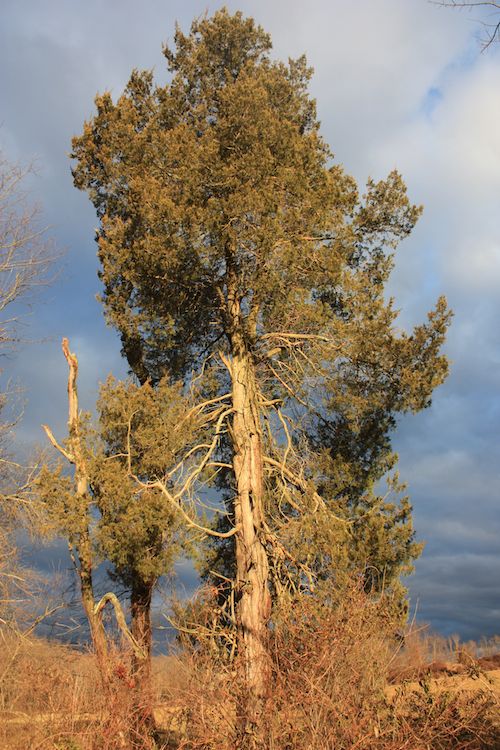Crow’s Nest: Eastern red cedars in our forest
A neighbor recently asked me a good question: why are most of the cedars in the woods at Crow’s Nest dead? The answer lies in the history of the land, the natural processes by which forests typically (re)grow, and the physiology of this species. Below, a mature eastern red cedar in full sun, part of a hedgerow at Crow’s Nest.

We know that the woods that are now part of Crow’s Nest were last cut in the 1940’s. Parts were selectively logged, others were likely clearcut, and parts of what are now woods were once pasture. We know the first item from amateur historians—local residents who were there—who tell us that beech was left behind since there wasn’t a market for that wood at the time. We suspect the second because Eastern red cedar is still found (standing dead) in other parts of the woods—and Eastern red cedar requires full sun; it’s an “early successional” species that takes advantage of the available light from the disturbance of the tree cutting. And we know the third item because there is barbed wire embedded in lines of trees throughout our forest, once part of the farmsteads whose houses and barns still stand.

Since eastern red cedar requires full sun, it eventually loses the competition with the other species that grew up in its shade: tuliptrees, ash, black gum, red and white oak, and a bit of sugar maple. Cedar is also a rot-resistant wood, so the trunks stand long after the tree has died. Others are left as just stumps after they were cut for farmers’ fence posts.
A great book for learning how to interpret the history of the woods by looking at what is present now is Reading the Forested Landscape by Tom Wessels and illustrated by Brian D. Cohen (The Countryman Press, 1997). It’s based on the New England forest but much of it is also true here in the Mid-Atlantic Piedmont.
Posted by Daniel Barringer on February 7, 2012.
